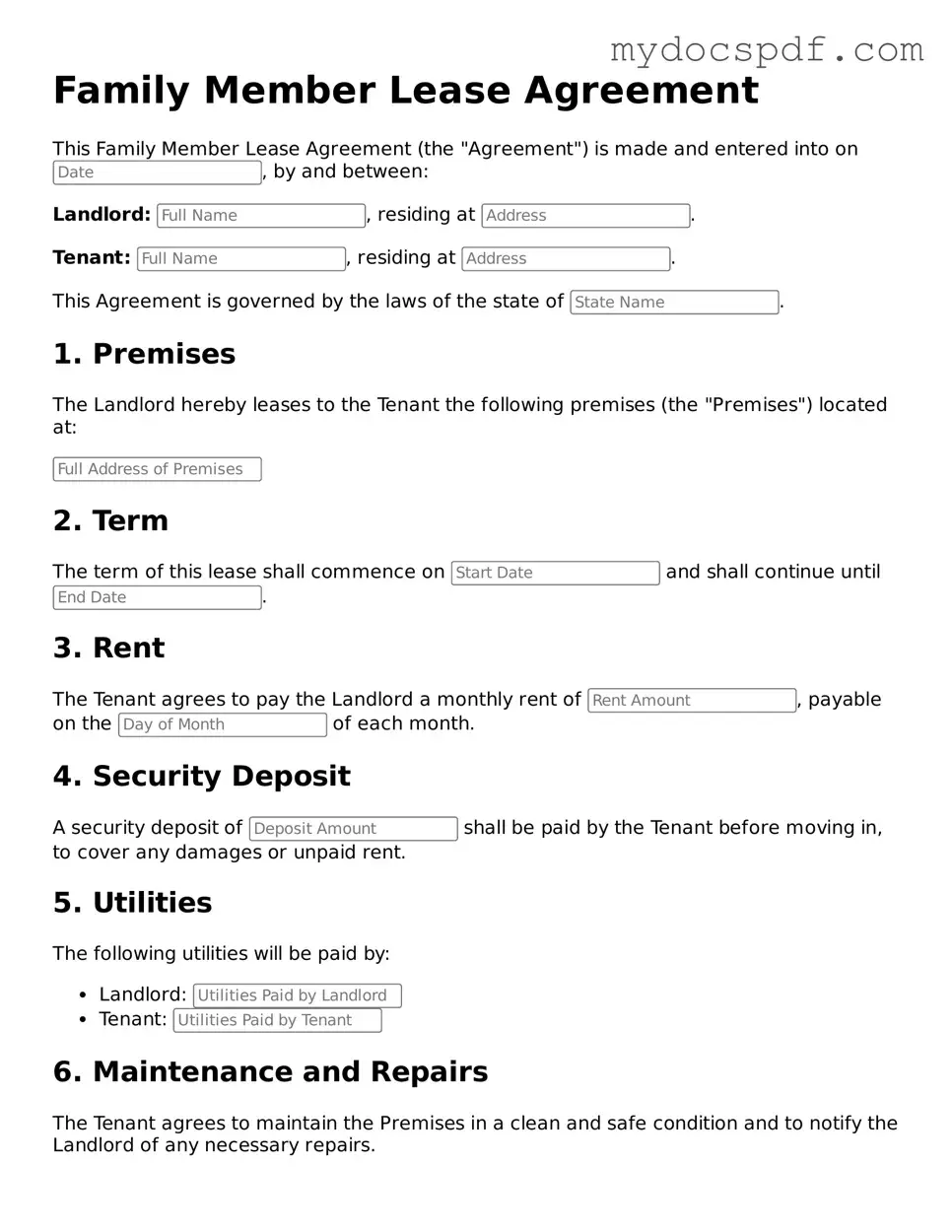Attorney-Approved Family Member Lease Agreement Template
A Family Member Lease Agreement is a legal document that outlines the terms and conditions under which a family member can rent a property from another family member. This agreement helps clarify expectations and responsibilities for both parties involved. By having a written lease, family members can avoid misunderstandings and maintain a positive relationship.
Access Editor Here
